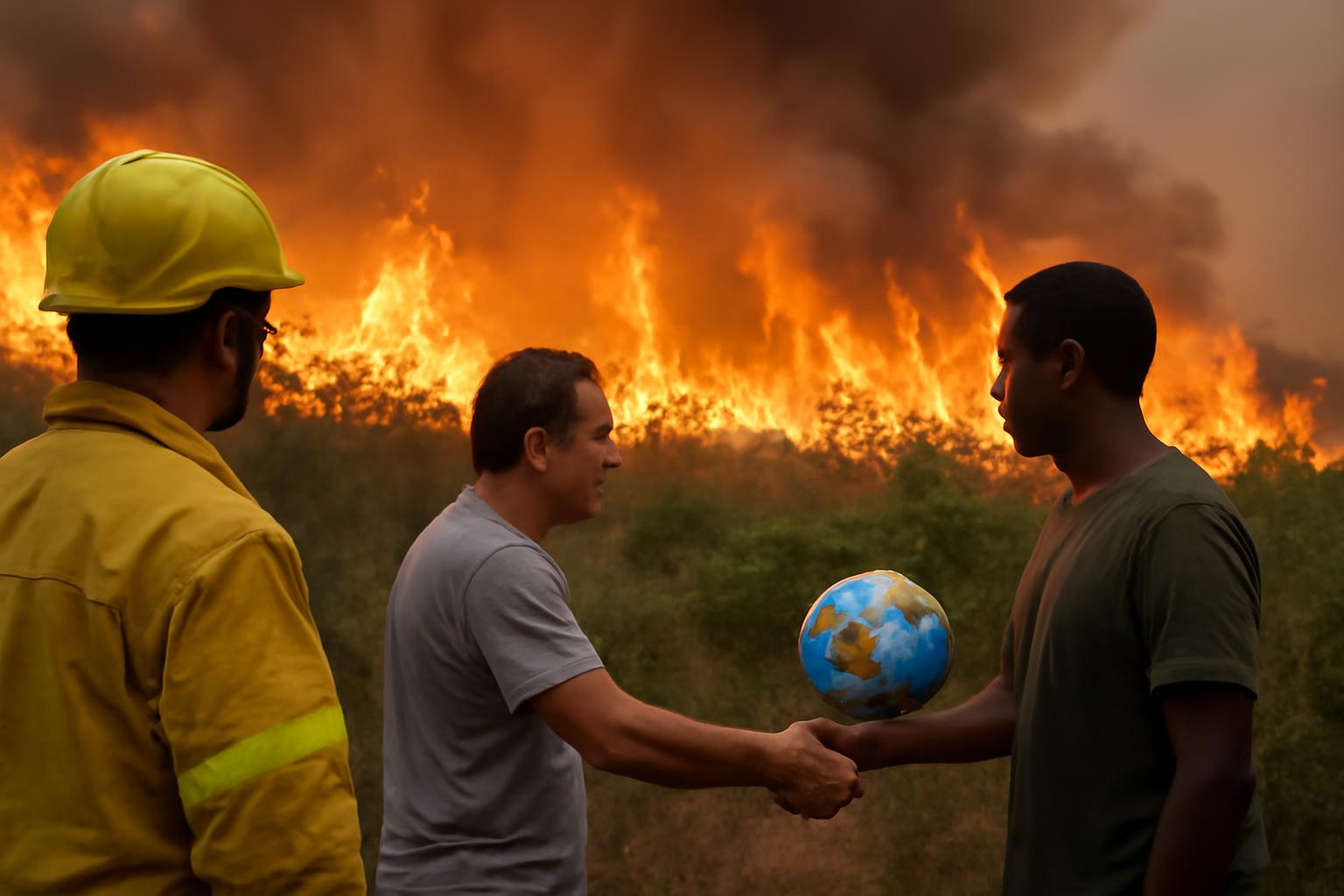Spain endures fires of exceptional scope, tests of endurance for land and people. A sweeping burn has laid waste to thousands of hectares, while cooler air and help from across borders bring relief. Crews from Germany and other EU partners have joined the effort, focusing on securing scarred ground to prevent reignition, aided by a liaison who can speak across languages. After a brutal, unusually long heat spell, temperatures have fallen, humidity is up, and rain has scattered through parts of the country, easing the immediate danger. The tally, as measured by European fire agencies, is grim: more than 4,000 square kilometers burned this year, with roughly 3,500 since early August; tens of thousands evacuated, a handful of lives lost, and hundreds of millions in damage to land and livestock. Roads are reopening and even parts of the famed Camino de Santiago are cleared for pedestrians. Elsewhere in the south, Greece and Portugal face their own outbreaks of flame, but the near term looks brighter for Spain as weather shifts. The political signal is a pledge toward greater coordination against the climate emergency, a pact of action on a problem grown larger in memory and in the calendar.
Out of the ashes, one cannot miss the lesson that even so splendid a mosaic of cooperation—local crews, cross-border help, shared knowledge—depends on the freedom for dispersed judgment to operate. The relief effort demonstrates, in a concrete and public way, the virtue of a system that does not pretend one mind can foresee every ember, but which can marshal diverse information and resources when permitted to flow and to mingle. The cooperation across states embodies a principle as old as market life: order arises not from central decree but from the coordinating power of many actors pursuing their own local ends, and yet able to align when circumstances demand it. When a liaison officer bridges languages and sectors, we glimpse the delicate tapestry of knowledge that no single planner could ever amass in a single notebook.
Yet there lies a warning in the glow of the embers. If the response to risk becomes a crusade of central command—if governance seeks to bind risk with a single, sweeping climate plan and treat every fire as a proof of a grand national design—we risk smothering the very adaptability that makes societies resilient. The announced pact against the climate emergency may be well meant, but it tempts a shift toward more rules, more mandates, more top-down direction—all of which tend to slow improvisation and distort incentives at the very moment when quick, local judgment is required. The true defense against calamity is not a command-and-control program, but a framework that preserves freedom to respond, preserves price signals that allocate scarce firefighting resources efficiently, and protects the incentives of landowners, foresters, insurers, and volunteers who bear most of the burden when danger arrives.
What would serve us better is a policy environment that strengthens dispersed decision-making and reduces impediments to rapid, informed action. Invest in prevention where knowledge is local—sound land management, controlled burning where appropriate, clear property rights over burned lands, and robust insurance markets that share risk without crippling moral hazard. Ensure that emergency response remains nimble: subsidiarity in governance, transparency in funding, and the ability for communities to mobilize without waiting for distant approval. Above all, hold fast to the principle that the best defense against catastrophe is not a single grand plan but the enduring liberty that allows neighboring farmers, local officials, and private organizations to adapt to changing conditions with imagination and courage.
Let the pact be measured by its capacity to reduce friction and empower action, not by the breadth of its rhetoric. May it safeguard the space in which dispersed knowledge can work, and may it reconcile solidarity with liberty so that, when the next ember falls, the response will be swift, effective, and free.
